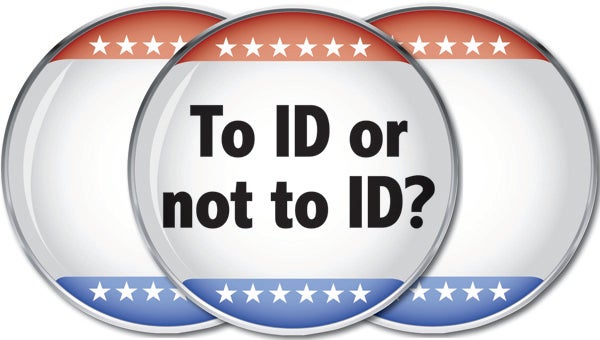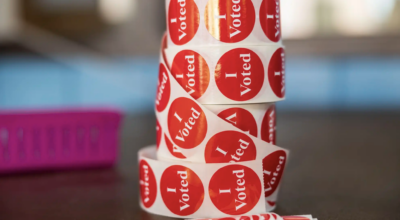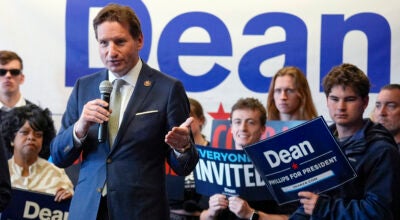To ID or not to ID?
Published 6:16 am Sunday, October 28, 2012
Residents divided on amendment that would require photo ID to vote
Minnesota voters will decide on Election Day whether all voters must show photo IDs in future elections.
The issue has divided local residents as it has voters across the state.
While proponents have said the constitutional amendment would protect the state from fraudulent voting, opponents have said the amendment disenfranchises some voters and is costly.
If the amendment passes, it will ask whether voters should have to show “valid photo identification” and whether the state should have to provide free IDs to eligible voters.
While driver’s licenses and state ID cards would work, proponents and opponents disagree on whether voters could use military IDs, passports, tribal identification cards or student IDs.
It would also create a system of provisional ballots for those who come to the polls without the proper ID and would require absentee voters to verify their identities in similar fashion to in-person voters. Exactly how the details would work would be left to next year’s Legislature.
Opponents
While proponents cite voter fraud as the reason for the amendment, opponents say the amount of voter fraud that exists has been exaggerated.
“I don’t think there’s been any evidence that there has been a lot of fraud,” said Albert Lean Joan Anderson. “I think people are honest, and so I think they’re making a big to-do about nothing.”
She said the state is better off spending the money that would have gone to the amendment on another problem that needs to be looked at. Anderson, a teacher, thinks many of her students’ families would be affected.
Albert Lean Ted Hinnenkamp called the amendment “a blatant way” to try and stop people from voting and said it would disenfranchise seniors, students and lower income people.
“This is a way to keep as many people away from the polls as they can,” Hinnenkamp said.
The amendment would complicate the election system and force property taxpayers to ultimately pay the cost of “free” IDs or the provisional balloting, according to the Minnesota League of Women Voters website.
It may also slow down election results.
The League of Women Voters states when a provisional ballot is cast because a voter doesn’t have a proper ID, the voter must go to the local elections office within a few days after the election and show a valid ID. Otherwise, the vote won’t be counted.
The group argues the amendment would also restrict absentee voting and mail balloting and affect Election Day registration.
While voters would be able to register at the polls, they would only be able to cast provisional ballots. These would be counted later only if a voter’s identity and eligibility can be verified, according to the League of Women Voters.
Minnesota Secretary of State Mark Ritchie has also spoken out against the amendment and said he would rather support an electronic voter identification system, which he said would be easier and cheaper.
Proponents
Minnesota Speaker of the House Kurt Zellers, in town Friday on a campaign stop for fellow Republican Rep. Rich Murray, said he is in favor of the proposed amendment because he thinks it is best for the integrity of the election system.
“For us it’s about integrity, but also making sure that first-time vote isn’t canceled out,” Zellers said.
People have to show their photo IDs for virtually everything, Zellers said, and he does not see how this proposal would be any different.
Freeborn County Republican Party Co-Chairwoman Katie Jacobsen said she wants to honor the people across the nation who fight for freedom and the right to vote, and she doesn’t want people to take advantage of the election system.
“That means a lot to me,” Jacobsen said. “I don’t want a dead person or Mickey Mouse to cancel my vote.”
She talked about a recent cell phone give-away in town for low-income residents that required people to submit a photo ID to obtain the cell phone.
She said she called the organization where the give-away was taking place and found out there were no problems with showing an ID from anyone who wanted a phone.
“People manage to get photo IDs to get free things,” she said.
Republican Marlene Behle said she is worried about illegal residents voting, and she doesn’t see why people think that having to show an ID would be a problem.
“With all the fraud that’s going on, we need to do this,” Behle said.
Freeborn County Republican Party Co-Chairwoman Al Arends agreed.
He has heard about college students who have gone around to different polling places and voted several times.
“Even if there’s only one fraudulent vote, it’s illegal and shouldn’t be allowed,” he said.
He noted how high school juniors and seniors taking the SAT exam are required to show an ID to take the test and doesn’t think it should be any different to vote.
“Voting is one of the highest priorities in the country.”
Ballot question:
“Shall the Minnesota Constitution be amended to require all voters to present valid photo identification to vote and to require the state to provide free identification to eligible voters, effective July 1, 2013?”
Quick facts about voter ID
Q: How many Minnesota voters don’t have photo IDs?
A: 84,000 currently registered voters don’t have Minnesota driver’s licenses or state IDs, and another 131,000 registered voters have IDs that don’t match their voting addresses, according to Secretary of State Mark Ritchie’s office. His website cites an estimate from the Division of Vehicle Services that 144,000 voting-age residents don’t have photo IDs.
Q: What kind of identification would be accepted?
A: Minnesota driver’s licenses and state ID cards would work, but the measure’s supporters and foes disagree on whether voters could use military IDs, passports, tribal identification cards or student IDs. Lawmakers would likely spell out the details. The amendment itself calls for “valid government-issued photographic identification,” which means expired IDs wouldn’t work. Amendment supporters say a valid ID wouldn’t necessarily have to include a current address, but foes are skeptical.
Q: How much will it cost?
A: Estimates vary widely, from $18 million to $150 million. Photo ID supporters put the number at the low end, including relatively modest costs to provide free IDs and educate voters about the new requirements. Those working to defeat the amendment estimate it much higher, with the high end including the cost of building accessible polling places in small communities that currently conduct elections solely through mail-in balloting, which they say would have to end. They also foresee significant costs for voters who would need to obtain birth certificates, marriage licenses and other documents to get valid IDs.
Q: How would provisional ballots work?
A: Voters without ID — even registered voters, who currently just have to sign their names — could cast a provisional ballot, but it wouldn’t be counted right away. They would have to certify their ballots through a process to be determined by lawmakers. The Legislature would decide whether voters would have to show up in person to certify a ballot, which could be onerous in rural areas where a county election office could be many miles from a voter’s home. Amendment opponents say a good share of provisional ballots might never be certified or counted.
Q: What happens to same-day voter registration?
A: About 500,000 Minnesota voters currently register to vote on Election Day. The amendment doesn’t mention same-day registration, but amendment opponents warn that many of those voters’ ballots would end up in the provisional ballot pile, to be counted later only if they certified their votes. Amendment supporter Dan McGrath of ProtectMyVote.com said voters with IDs would register and vote normally after having their names checked against lists of convicted felons and others who are ineligible to vote.
Q: What about absentee voting?
A: Ritchie warns that the amendment’s requirement of “substantially equivalent” identity verification for absentee voting would make it impossible to verify the identities of 250,000 military, overseas and domestic absentee voters and end absentee voting as it now exists. Opponents say that’s hyperbole — McGrath said absentee voting would become much like conducting an online banking transaction, with voters providing their ID number on the ballot envelope to meet the amendment’s requirement.
— Information from the Associated Press






